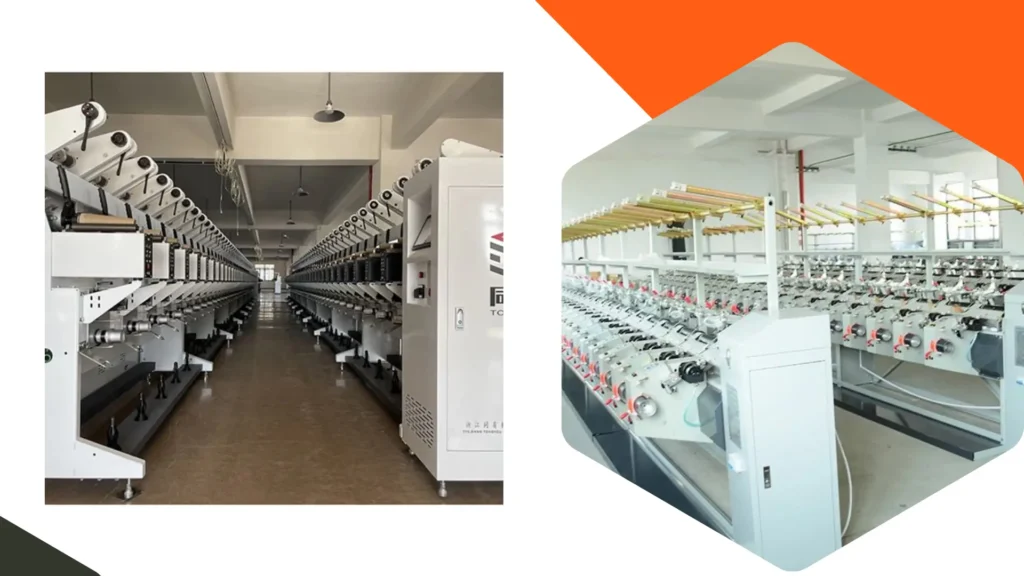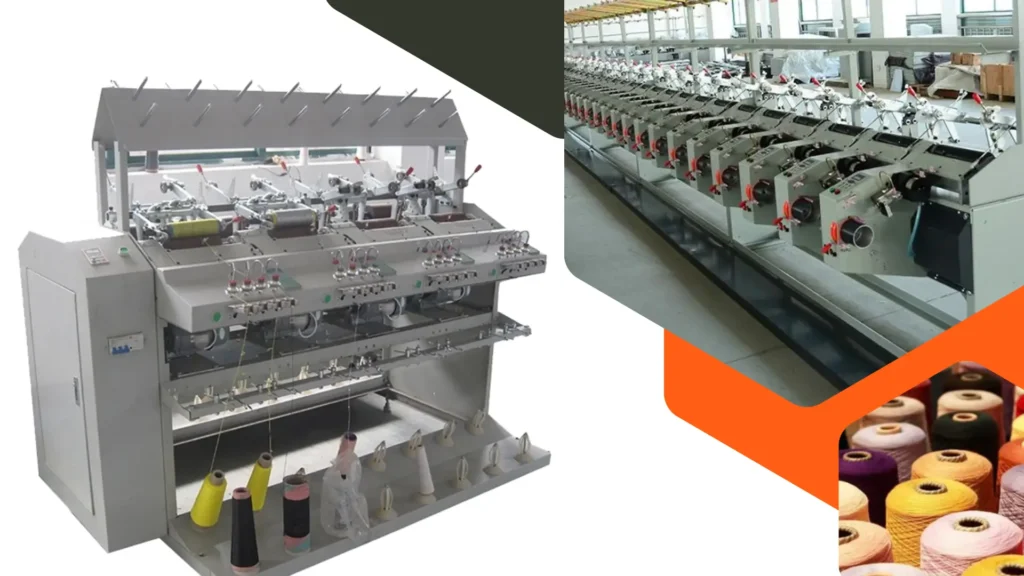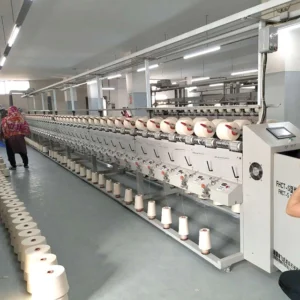The textile industry is one of the largest contributors to environmental pollution, but advancements in technology are paving the way for more sustainable practices.
Robotics, in particular, is playing a transformative role in achieving green textile production.
From reducing waste to optimizing energy use, robotic systems are helping manufacturers minimize their environmental footprint while maintaining efficiency and quality.
This article explores how robotics is driving sustainability in the textile industry, offering insights for businesses looking to adopt greener practices.
By integrating robotics into their operations, textile manufacturers can not only reduce their environmental impact but also improve productivity and product quality, creating a win-win scenario for both the planet and their bottom line.
How Do Robotics Reduce Waste in Textile Production?
Precision Cutting and Fabric Utilization
Robotic cutting systems use advanced algorithms to maximize fabric utilization, minimizing waste during the cutting process.
These systems analyze fabric patterns and optimize cutting layouts to ensure that every inch of material is used efficiently.
For example, a robotic cutting machine can arrange pattern pieces like a puzzle, reducing fabric scraps that would otherwise end up in landfills.
This precision not only saves materials but also lowers production costs, making it a sustainable and economical choice for textile manufacturers.
Automated Quality Control
Robots equipped with vision systems can detect defects in textiles early in the production process, reducing the need for rework and preventing wasted materials.
These systems use high-resolution cameras and sensors to identify issues such as uneven dyeing, stitching errors, or fabric flaws.
By catching defects early, manufacturers can address problems before they escalate, ensuring higher-quality products and minimizing material waste.
This proactive approach to quality control is a key component of sustainable production.
Efficient Recycling Processes
Robotic systems can sort and process textile waste for recycling, turning scraps into reusable materials.
For instance, robots can separate different types of fabrics, such as cotton, polyester, and blends, ensuring that each material is recycled appropriately.
This not only reduces waste but also supports the circular economy by reintroducing materials into the production cycle.
By automating recycling processes, manufacturers can significantly reduce their environmental impact and contribute to a more sustainable textile industry.
And More:
- How to Use Data to Optimize Production Efficiency in Textile Factories
- Safety Points for Staff Operating Automation Equipment in Textile Production
How Can Robotics Optimize Energy Consumption?
Smart Energy Management
Robotic systems can be integrated with smart energy management tools to monitor and optimize energy use in real time.
These tools analyze energy consumption patterns and adjust operations to minimize waste.
For example, a robotic system might reduce power usage during off-peak hours or switch to energy-saving modes when machines are idle.
This reduces energy waste and lowers the carbon footprint of textile factories, making them more environmentally friendly.
Automated Machine Shutdowns
Robots can automatically shut down machines during idle periods, preventing unnecessary energy consumption. In textile factories, where production schedules can vary, this feature is particularly useful.
For instance, if a machine is not in use for a set period, the robotic system can power it down until it’s needed again.
This not only saves energy but also extends the lifespan of the machinery, reducing the need for frequent replacements and further supporting sustainability.
Energy-Efficient Robotic Systems
Modern robots are designed to consume less energy while maintaining high performance.
By replacing older, less efficient machinery with energy-efficient robots, factories can significantly reduce their energy usage.
For example, newer robotic systems often include regenerative braking, which captures and reuses energy during operation.
This innovation not only lowers energy costs but also reduces the factory’s overall environmental impact.
What Role Do Robotics Play in Reducing Chemical Usage?
Precision Dyeing and Finishing
Robotic systems can apply dyes and finishes with pinpoint accuracy, reducing the amount of chemicals needed.
For example, a robotic dyeing machine can calculate the exact amount of dye required for a specific fabric, minimizing excess usage.
This precision not only reduces chemical waste but also ensures consistent color quality, enhancing the final product.
By optimizing chemical usage, manufacturers can lower costs and reduce their environmental footprint.
Automated Chemical Mixing
Robots can precisely mix chemicals according to predefined formulas, ensuring consistency and reducing the risk of overuse.
In textile production, chemical mixing is a critical step that requires accuracy to achieve desired results.
Robotic systems eliminate human error, ensuring that the correct proportions are used every time.
This reduces chemical waste and prevents the release of harmful substances into the environment.
Safer Handling of Hazardous Materials
Robots can handle hazardous chemicals safely, reducing the risk of spills and exposure to workers.
For example, a robotic system can transport and dispense chemicals in controlled environments, minimizing the chance of accidents.
This improves workplace safety and reduces environmental contamination, making textile production safer and more sustainable.
How Do Robotics Support Sustainable Material Sourcing?
Automated Sorting of Recycled Materials
Robotic systems can efficiently sort recycled textiles, separating materials by type and quality.
For instance, robots can use sensors to distinguish between cotton, polyester, and other fabrics, ensuring that each material is processed correctly.
This supports the use of recycled fibers in production, reducing the need for virgin materials and promoting a circular economy.
Precision in Natural Fiber Processing
Robots can process natural fibers like cotton and wool with minimal damage, preserving their quality and reducing waste.
For example, robotic systems can gently clean and prepare natural fibers for spinning, ensuring that they retain their strength and texture.
This supports the use of sustainable, biodegradable materials in textile production, aligning with green manufacturing principles.
Enhanced Traceability
Robotic systems can track materials throughout the supply chain, ensuring transparency and accountability.
For example, a robotic system might use RFID tags to monitor the journey of raw materials from sourcing to production.
This helps manufacturers verify that their materials are sourced sustainably and ethically, meeting the demands of eco-conscious consumers.
What Are the Benefits of Robotics for Green Textile Production?
Improved Efficiency and Productivity
Robotic systems streamline production processes, reducing the time and resources needed to manufacture textiles.
For example, automated weaving machines can produce fabrics faster and with fewer errors than manual methods.
This leads to lower energy consumption and a smaller environmental footprint, making textile production more sustainable.
Consistent Quality and Reduced Defects
By automating repetitive tasks, robots ensure consistent quality and reduce the likelihood of defects.
For instance, robotic sewing machines can stitch garments with perfect precision, minimizing errors and waste.
This not only improves product quality but also reduces the environmental impact of rework and discarded materials.
Scalability for Sustainable Growth
Robotic systems can be easily scaled to meet increasing production demands without compromising sustainability.
For example, a factory can add more robotic units to its production line as demand grows, ensuring that efficiency and sustainability are maintained.
This makes robotics an ideal solution for businesses committed to green practices and long-term growth.
How Can Robotics Enhance Worker Safety and Sustainability?
Reducing Exposure to Harmful Substances
Robots can handle tasks that involve exposure to harmful chemicals or repetitive motions, protecting workers from health risks.
For example, a robotic system can take over dyeing processes, reducing workers’ exposure to toxic dyes. This contributes to a safer and more sustainable workplace.
Minimizing Physical Strain
By automating physically demanding tasks, robots reduce the risk of workplace injuries and improve employee well-being.
For instance, robotic systems can lift and move heavy fabric rolls, preventing strain and injuries.
This aligns with the principles of social sustainability, ensuring that workers are treated with care and respect.
Supporting Skilled Labor Development
The integration of robotics creates opportunities for workers to develop new skills in operating and maintaining advanced systems.
For example, employees can be trained to program and troubleshoot robotic machines, fostering a more skilled and adaptable workforce.
This not only enhances job satisfaction but also supports long-term sustainability by building a knowledgeable and capable team.
What Are the Challenges of Implementing Robotics in Green Textile Production?
High Initial Investment
The upfront cost of robotic systems can be a barrier for some manufacturers.
However, the long-term savings in energy, materials, and labor often justify the investment.
For example, while the initial cost of a robotic cutting system may be high, the reduction in fabric waste and increased efficiency can lead to significant cost savings over time.
Technical Expertise Requirements
Implementing robotics requires technical expertise, which may necessitate additional training for employees. Investing in workforce development is essential for successful adoption.
For instance, factories can partner with technology providers to offer training programs that equip workers with the skills needed to operate and maintain robotic systems.
Integration with Existing Systems
Integrating robotic systems with existing machinery and workflows can be complex.
Careful planning and collaboration with technology providers are key to overcoming this challenge.
For example, manufacturers can work with robotics experts to design customized solutions that seamlessly integrate with their current production processes.
What Does the Future Hold for Robotics in Green Textile Production?
Advancements in AI and Machine Learning
Future robotic systems will leverage AI and machine learning to further optimize production processes, reduce waste, and enhance sustainability.
For example, AI-powered robots could predict maintenance needs, preventing downtime and reducing resource waste.
Increased Adoption of Collaborative Robots
Collaborative robots, or cobots, will become more prevalent, working alongside humans to improve efficiency and safety in textile factories.
These robots are designed to interact safely with workers, making them ideal for tasks that require human oversight.
Expansion of Recycling and Circular Economy Solutions
Robotics will play a critical role in advancing recycling technologies and supporting the growth of the circular economy in the textile industry.
For example, robotic systems could automate the sorting and processing of post-consumer textiles, turning waste into valuable resources.
Conclusion
Robotics is revolutionizing the textile industry by enabling greener, more sustainable production practices.
From reducing waste and optimizing energy use to minimizing chemical usage and enhancing worker safety, robotic systems offer a wide range of benefits for manufacturers committed to sustainability.
While challenges such as high initial costs and technical requirements exist, the long-term advantages of adopting robotics far outweigh these obstacles.
By embracing robotic technology, textile factories can achieve their sustainability goals, reduce their environmental impact, and pave the way for a more sustainable future in the industry.












